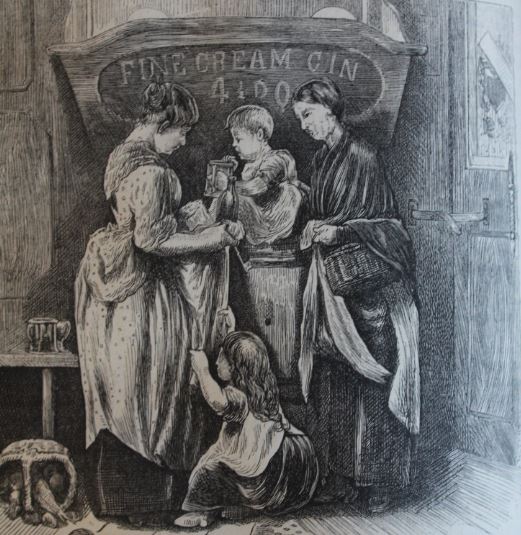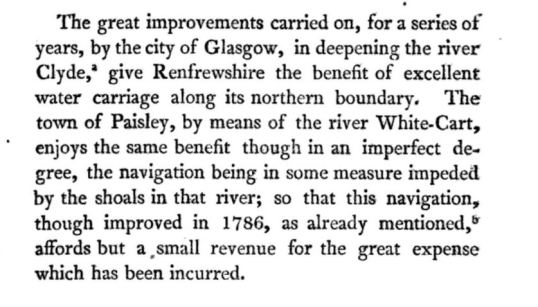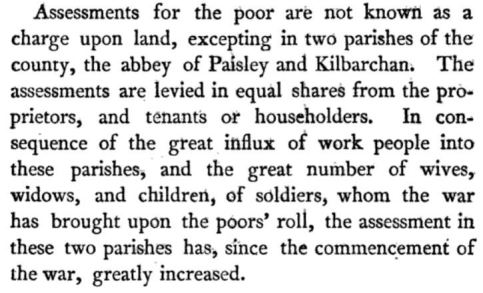On the 12th April 1824, the Glasgow Court of Justiciary met to deal with three months’ worth of prisoners now languishing in Glasgow awaiting trial.
Among the prisoners were our Ann Livingston aged about fourteen and her partner Alexander Stevenson, only a few years older. The relationship between the two teenagers is not known but most likely they were either cousins or romantically connected. Ann may not have had contact with Alexander since their incarceration but it is likely that she did. They might have had many friends to keep them informed of the other’s circumstances.
According to the book ‘A summary of the powers and duties of juries in criminal trials in Scotland‘ by William Steele published in 1833, the crime of ‘opening lock-fast places’ means breaking into a locked or blatantly secured area while legitimately on a premises. So this is different to breaking into a house where one is also trespassing. Wherever they were, Alexander and Ann were allowed to be there, but they then decided to break into a room or cupboard or chest which they were not authorised to break into. The available details are very sketchy.

Ocean and birds from The Quiver 1864
Ann was just one of many women arrested in that quarter. Margaret Gordon, a ‘thief by habit and repute’ had been caught breaking into a house and Maria Kelly was accused of uttering a forged note. Margaret McTeague had been arrested along with her father for uttering several forged notes. Margaret was five years older than Ann. Margaret Bell was incarcerated for receiving goods from a housebreaking expedition by a group she was involved with.
Margaret Gordon was brought before the bar on the first day of the sessions, found guilty and sentenced to 14 years’ transportation. Maria Kelly appeared next and was declared free.
This was the third time at least that Ann had been arrested and tried, so she probably understood the system quite well. She was not called on that first day, but she and Alexander were the second case heard on Tuesday 13th April
There is a brief description in the Caledonian Mercury of 17th April 1824:
The court met this day at nine o’clock …Alexander Stevenson, and Ann Livingstone, accused of theft by opening lock-fast places, were found Guilty, and sentenced to transportation for fourteen years. On receiving sentence, Livingstone exclaimed “I hope your Lordship will be in hell before that period.”
This is our first official record of Ann’s attitude towards anyone in authority.
There is little detail available regarding Ann’s time in jail, awaiting transportation. This was a time of bonding for many convicts whose lifelong friends in Australia can be traced back to the same ship and the same jail after their sentencing. Ann Livingston and Margaret Gordon were soon joined by Margaret McTeague. Ann Dunsmore, another teenager, was already in the cells with a young child of obscure description. Margaret Paisley, Janet Buchanan and Mary Little were certainly also present. Most women had committed offenses in company with a male family member, either a husband or father. Margaret McTeague’s father had been sentenced to death. Ann Dunsmore and Janet Buchanan had a husband also under sentence of transportation and they could probably expect to be reunited in the penal colony.
Ann’s jail report was not complimentary: “a prostitute and thief, connexions of the worst description“.
The Caledonian Mercury of 11 September 1824 finally has a reference to these women:
Thursday the following female convicts arrived at our jail (Edinburgh?) from Glasgow, on their way to the hulks, preparatory to transportation, viz. – Ann Hunter or Dunsmore, Margaret McAslan or Paisley, Janet Gardner or Buchanan, Mary Little, Margaret Gordon, Margaret McTeague, and Ann Livingstone. They were the same afternoon conveyed to Leith, and embarked on board the smack Hawk, for the Thames.

The convict ship Neptune. Roughly similar to the Henry.
The women were transported to Van Diemen’s Land on the ship Henry. The surgeon’s log for this journey spans the period 02 August 1824 till 01 March 1825. Conduct reports for the convicts give an arrival date of 08 February 1825. Ann Livingston does not appear in the summary of the surgeon’s log, however the log has not been digitized so I have not viewed the whole thing.
Shipping reports of the time all have the same brief detail, dated October 11 1824 at Deal: ‘came down the river, the ship Henry, Ferrier’ . We know that the above women were all transported on this ship so they didn’t have long to wait. James Ferrier was the captain.
On her conduct record, Janet Buchanan states that her husband was now at Sheerness awaiting transportation. Ann Dunsmore says that her husband was already in the colony. The women clearly had some information about loved ones.
From the Hobart Town Gazette (“Ship News.” Hobart Town Gazette and Van Diemen’s Land Advertiser (Tas. : 1821 – 1825) 11 Feb 1825: 2. accessed Web. 21 Feb 2016 )
SHIP NEWS
Arrived on Wednesday from England, the ship Henry, Captain Ferrier, with 79 female prisoners, who have 10 children, and 25 free women, with 23 children, the latter having been sent out at the expense of Government to join their husbands and relatives in these Colonies. The Surgeon Superintendent is Dr. Carlisle, R. N.-The Henry left the Downs the 12th of Octoher, and on her passage touched at St. Jago’s. She brings no mail, but newspapers to the 6th of October.
The Henry offloaded its cargo of convicts very quickly, keeping two convicts on board plus several of the free women who all travelled on to Port Jackson.
We don’t know Ann’s first impressions of Hobart Town. She arrived in February so the weather was probably beautiful. The town was small, the treatment of convicts was still harsh so she may not have felt very comfortable. Several of the convict women probably lost their children at this point, at least temporarily, with the children removed to the town orphanage. They may not have had enough confidence in the system to believe they would see those children again.
The best thing for Ann’s descendants is that she has now arrived where the record keeping was quite good – especially good with regard to our Ann who soon made herself known to the authorities.

West side of Mt Wellington in the clouds Jan 2014, a light rain falling. This was a different century but the season in which Ann arrived (summer).



















